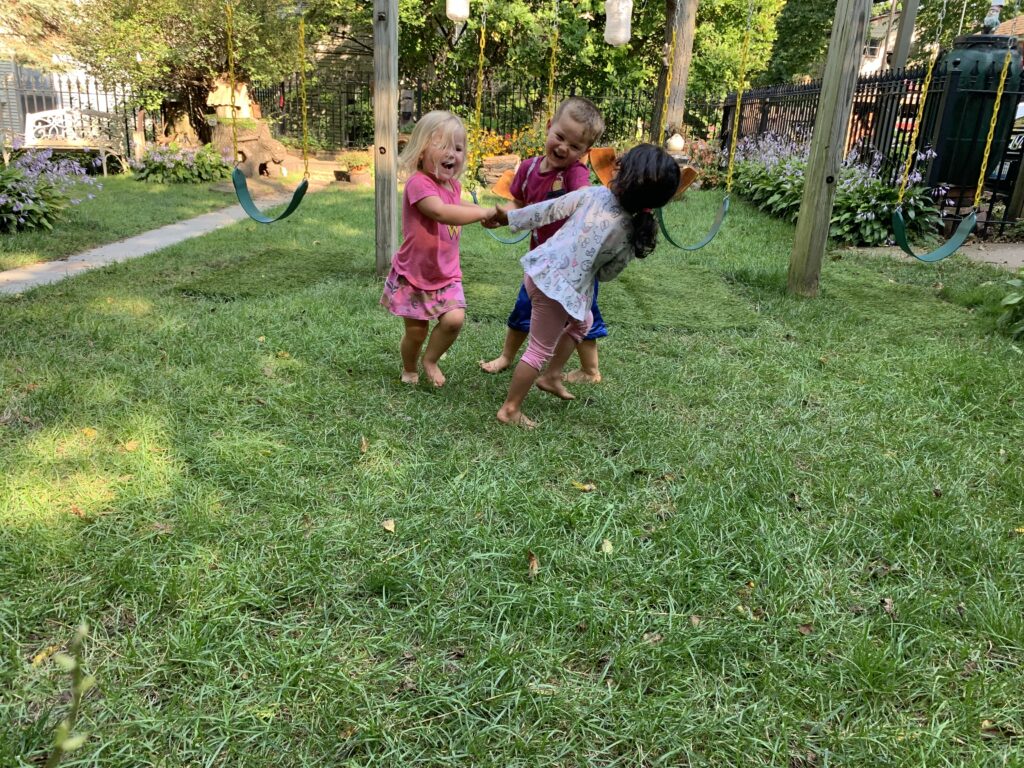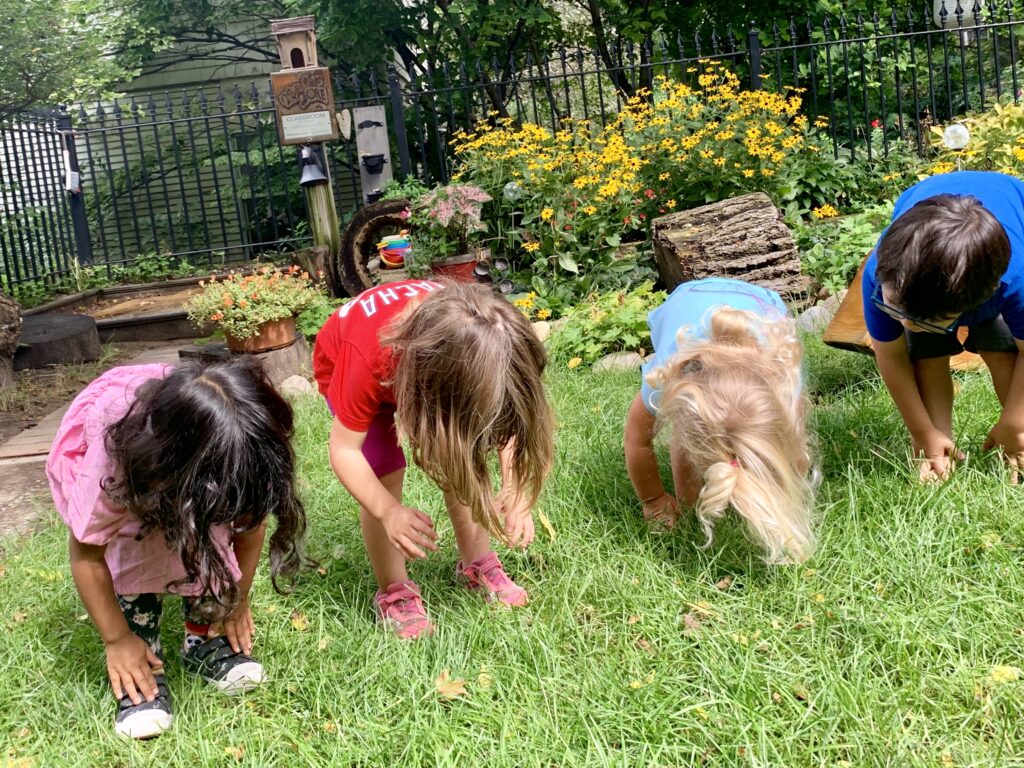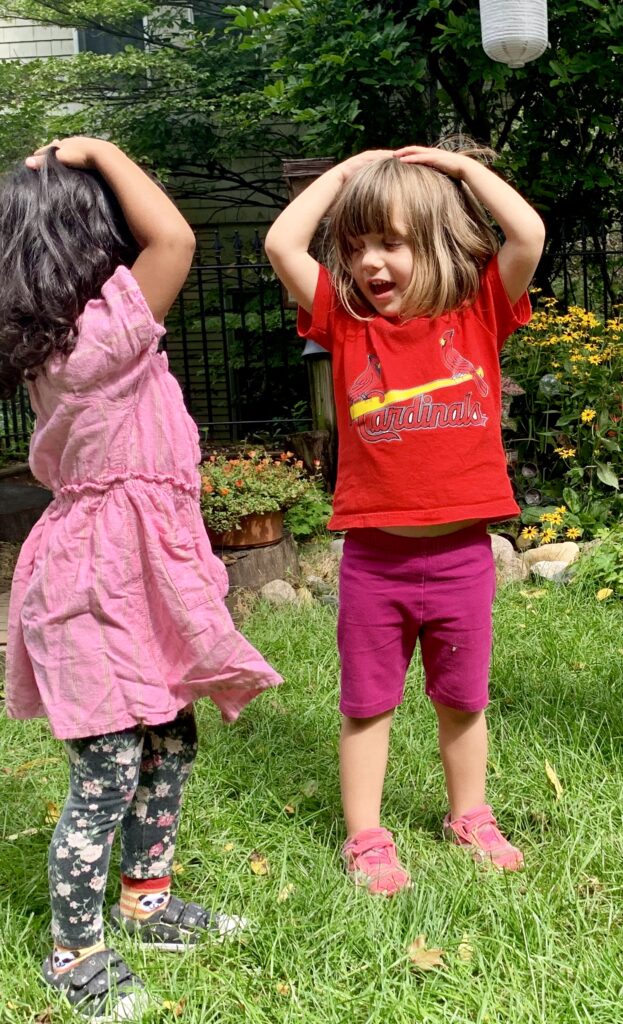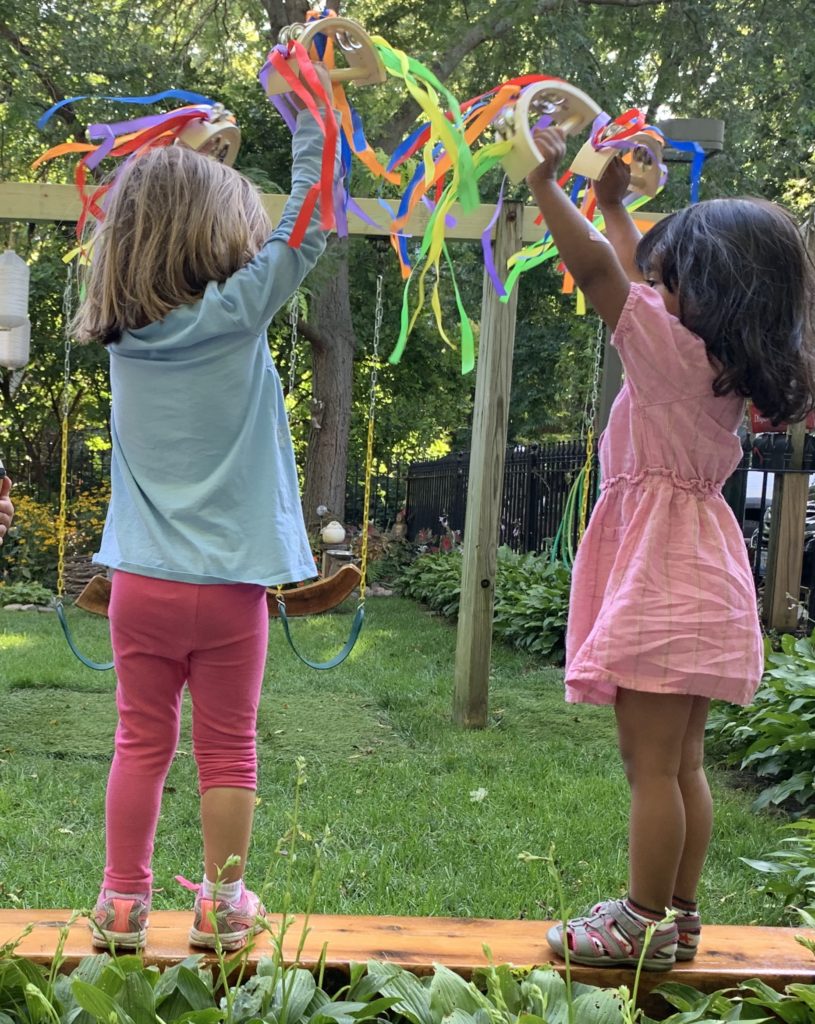Math, Music and Memory

“Five green and speckled frogs…sat on a speckled log…eating some delicious bugs. Yum yum!”
I hear a chorus of voices singing in our outdoor classroom as three young friends hold hands and frolic around in a circle
When we sing counting songs such as “Five Green and Speckled Frogs” or “This Old Man,” we introduce counting and numbers and math concepts such as removing one from a group.
The repetition and rhythm in these songs make it easy for very young children to remember the name and sequence of number patterns. As they learn to anticipate these patterns and the sequences of events or objects, children build early math skills that they will need in the years to come.
Music and movement are powerful tools for learning. When children actively listen to and dance to music, multiple areas in their brains light up. As we engage more senses, we engage more areas of the brain—and more learning takes place!
A five-year study at the University of Southern California’s Brain and Creativity Institute found that the use of music in early childhood accelerates brain and language development, speech perception and reading skills.
How many times have you used counting while singing children’s songs? When we give children opportunities to sing along with music or listen to music, we enable them to explore math concepts such as matching, comparison, patterns, sequencing, counting, if/then prediction, shapes and space.

We also use songs to work on vocabulary, memory and repetition. This week, the children asked if they could sing the song “Head, Shoulders, Knees and Toes” over and over again.
It’s fun to watch children of different ages and abilities participate in this activity. The beauty of this song is that everybody loves it. Everyone feels successful and happy, regardless of their developmental level, their physical coordination or their ability to anticipate and execute the moves.
When children sing songs like “The Wheels on the Bus,” the music and movement stimulate so many areas of the brain that learning is enhanced by as much as 90 percent. Physical movement also enhances memory and recall.

When I see students singing and laughing their way through “Heads, Shoulders, Knees and Toes” or “Teddy Bear, Teddy Bear,” I know that they are developing physical skills such as balance, spatial awareness and hand-eye coordination, as well as social skills such as cooperation and taking turns.
Children also learn how to think, explore, work things through and develop their language and self-expression skills as they sing and dance or play an instrument.
Have you ever heard a child make up all of the words to a song as they sing it? That’s brain development in progress!

Using songs in your daily routines can help you meet the math standards for early childhood education. Keep it light, easy and age-appropriate! Sing loud, sing often and sing off-key! The children don’t care. That won’t be what they remember. They will remember the words to the song, which will lay a strong foundation for their future math learning.
I sing this with my pre-schoolers & other classes i help in.. Plus other songs with same counting..music..memory
This is always one of my favorites. By adding in specific words inbetween each part of the song (like 4 minus 1 equals ____), you can encourage greater understanding.
We love to sing in our classroom. One of my favorite songs is: “5 Little Ducks”. All of the kids participate when we sing .
i run my classroom the same way. we do alot of music dance and play!
We can include more songs in our day
I love how easy yet effective this is!
You can make a graph and put some of the songs you sang and see which one is the favorite by letting them vote and making a pictograph with it
The songs are truly key for the children, it really gets them moving, mind and body I love it.
Being able to add numbers/math in catchy and fun children songs really stimulates children’s brains. Not only that but it can also help children create a positive point of view towards numbers.
Children enjoy doing activities like singing playing games. The children learn new skills when they involved shapes counting matching and more.
In the class children like music, head and shoulders knees and toes or if your happy and u know clap your hands children hear directions..
We practice music and movement, it is very effective and fun
I didn’t really think about songs being math but it totally is.
Children crave music and movement activities, we can enlist their help in so many ways when using it. We can graph a couple of songs and have the children decide what to listen to. We can enlist children to help with props to use. We can enlist the parents to suggest songs from their cultural upbringing.
My little 1s lov 3 lil speckled frogs. My 15-18 mo old have the cadence of the numbers down pat. They.re starting to say the numbers.
This is one of my favorite songs to sing with my class. I have a homemade book I use that shows the frogs disappearing as we count down the numbers.
Being exposed to music can help children/student memorize. As you sing your favorite song, you are basically singing the same information over and over again that will make you remember word by word.